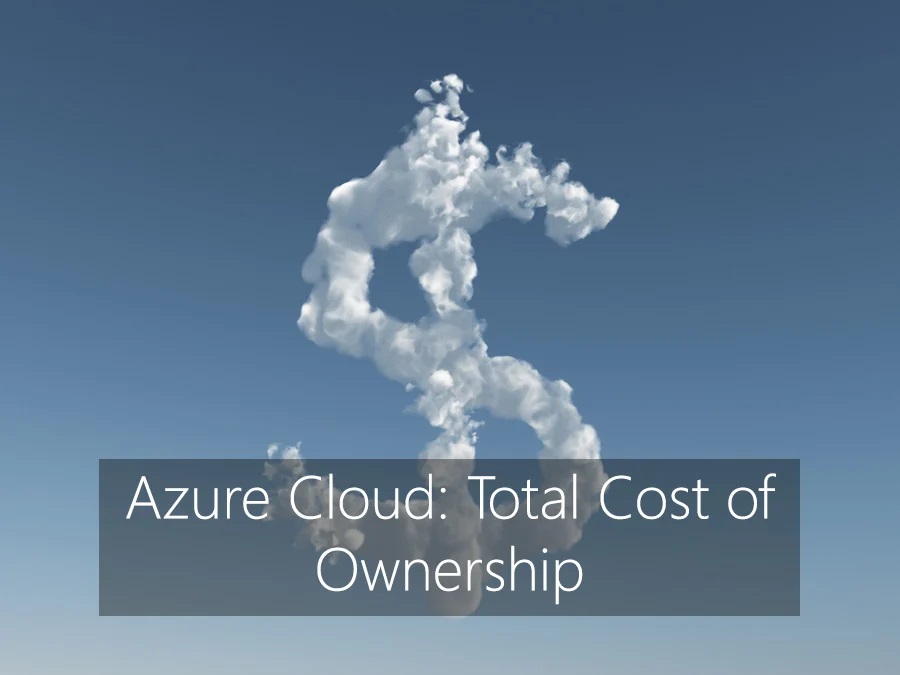Inside This Article
- What variables do you input in the workloads section of the Azure TCO tool?
- What assumptions can be adjusted to reflect business costs when using the Azure TCO calculator?
- What final inputs does the Azure TCO tool require to generate a meaningful cost comparison report?
The Transition to Cloud-Based Business (Cloud ERP)
Going forward, worldwide business will be conducted using cloud-based services. Incorporating a cloud-based ERP (Enterprise Resource Planning) platform into your business operations won’t be a novelty anymore. It will be the way that business is conducted.
For owners reluctant to make the switch from site-based platforms, the benefits of a cloud-based ERP are simple and valuable. With an ERP software working on Microsoft Azure you get:
- Increased productivity tools
- Integrated platforms
- Decreased potential costs
To get an idea of how those savings will impact your company, business owners can use the Microsoft Azure Total Cost of Ownership (TCO) tool to calculate their savings using a cloud-based ERP.
The Total Cost of Azure Cloud Ownership
When speaking about the cost of a cloud-based ERP hosted on Microsoft Azure, we aren’t speaking about a fixed price point for the software. Instead, TCO is based off of all the complex variables that affect your business’s tech costs versus the price of the Azure software license. The underlying philosophy is that the savings you will get from cloud-based computing versus on-site processes will not only pay for the cost of the license, but will continue to provide you with significant savings over time.
The TCO price tool is divided into 3 sections which allow you to input a wide range of variables that describe your business operations.
Workloads
The tool’s first section is workloads. This section allows you to define how your business currently utilizes on-site technology to operate.
These variables include 4 subheadings:
- Server
- Database
- Storage
- Network
The server section allows you to describe the specs on the server that you currently use, including whether or not it is a physical server, how many there are, what operating system it uses, and the size of its RAM.
The database includes information like what SQL database you use, its operating system and size, and the server it utilizes.
The storage section allows you to describe how you back up company data, and the size of storage space available to you.
The networking section simply allows you to define the bandwidth that your processes use.
Adjust Assumptions
This section allows you to account for the business costs involved to run your on-site ERP.
These assumptions include:
- Electricity costs
- IT costs
- Storage costs
- Extra security and assurance costs
- Hardware costs
- Software costs
- Virtualization costs
It is essential to enter the most accurate information that you can under the assumptions heading. This will allow the TCO tool to correctly identify opportunities for the Azure platform to save on your costs, or eliminate a cost-producing factor altogether.
The Report
The tool’s final section is the resulting report that it generates. This section allows you to enter 3 final pieces of information to ensure that the report gives you the most meaningful numbers. Those items are:
- Time frame
- Region
- Licensing program
The tool will then generate a comparison between the cost of your current on-site ERP versus the cloud-based Azure service, showing you the potential savings over the period of time you chose, given the type of Azure license you’d like to purchase.
Transitioning to Azure
In most every scenario, the cost savings provided by the Azure platform are significant. Cloud-based ERP reduces on-site costs across the board while reducing or eliminating redundant and unnecessary cost-producing factors.
Technology Management Concepts specializes in helping business owners make the transition from on-site services to Azure.
Visit our website’s resources to learn more about our solutions in order to further your understanding of financial and business management systems. Team up with a certified Microsoft Gold Partner to make your migration to the cloud seamless. If you have any questions regarding Dynamics 365 or other ERP/CRM systems, you can contact us here.
Don’t forget to follow us on Facebook, LinkedIn, and Twitter. Subscribe to our YouTube channel for insightful tutorials and demos.






